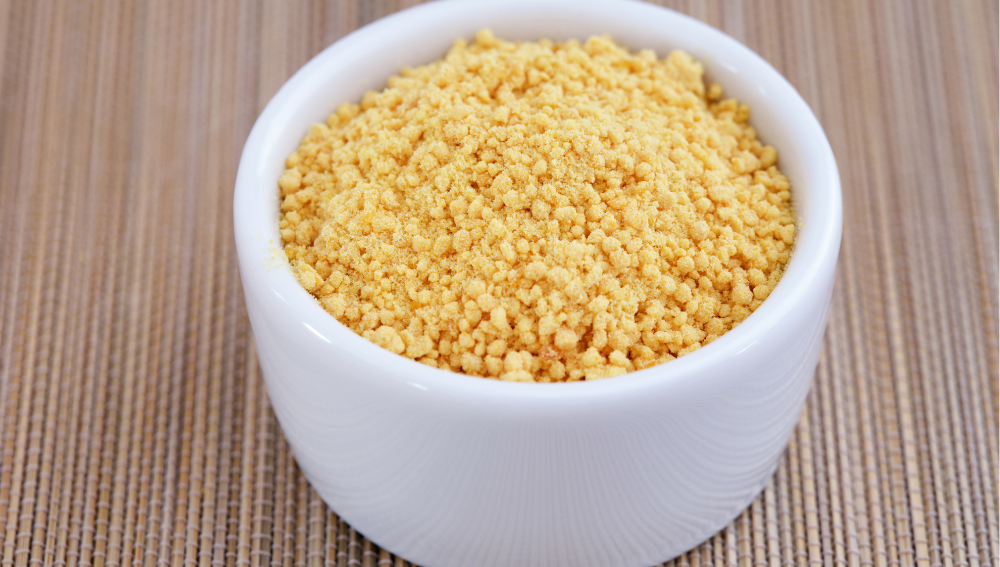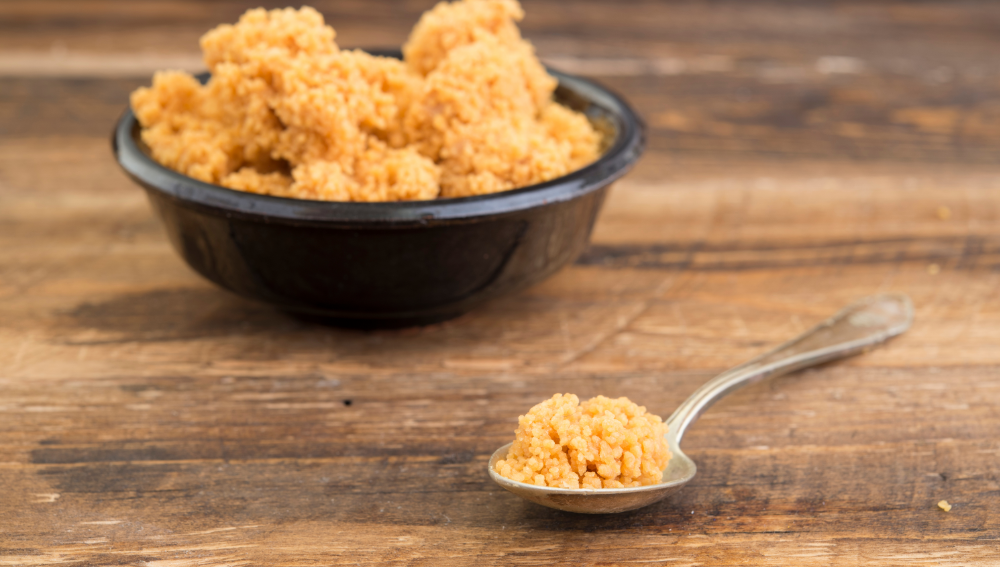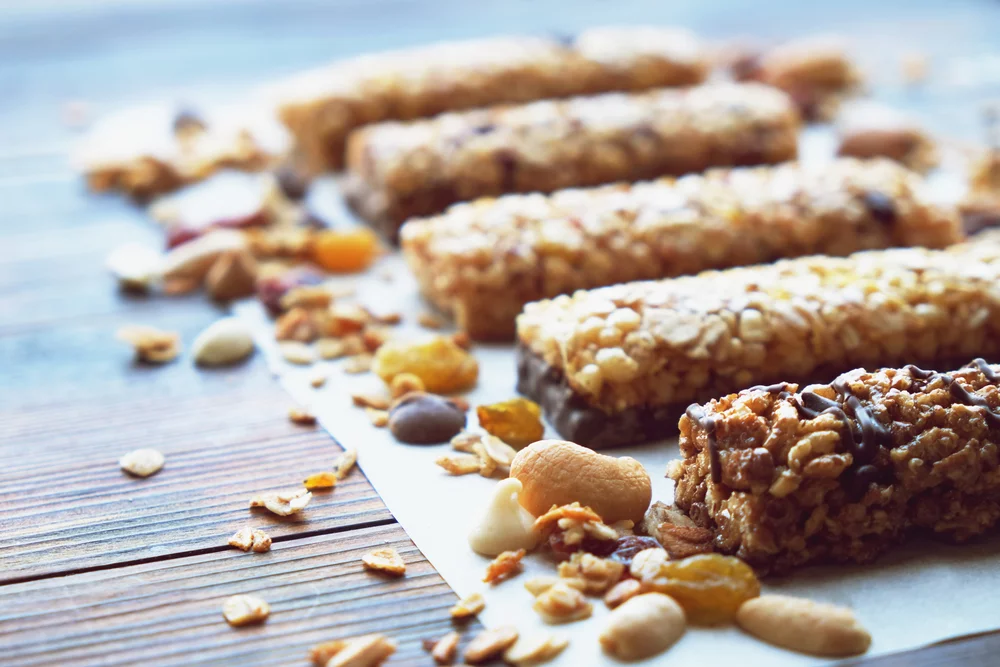Lecithin is a naturally occurring phospholipid found in various food items, particularly those rich in fats. It is commonly used in cooking and baking as an emulsifying agent, stabilizer, and lubricant, among other applications.
However, some individuals prefer to seek alternatives to lecithin, whether due to dietary restrictions, allergies, or simply a preference for other ingredients.
In this article, we will explore some of the best substitutes for lecithin, and discuss their applications in various fields, including baking, cooking, and cosmetics.
Understanding the role of lecithin in various applications is crucial when looking for an appropriate substitute. This phospholipid is known for its ability to bind water and fat molecules, resulting in a smoother texture and enhanced stability in food products.
Additionally, lecithin can aid in preserving foods and is even employed in certain health and nutrition practices. With this knowledge, selecting the ideal lecithin alternative can be a more informed and confident choice.
Key Takeaways
- Lecithin has various roles in cooking, baking, and cosmetics, making it essential to understand its functions when seeking a substitute.
- Alternatives to lecithin can address dietary restrictions, allergies, or personal preferences and can be used effectively in various applications.
- When choosing a lecithin substitute, considering factors such as product labels, vegan recipes, and health implications can lead to a better-informed decision.
Understanding Lecithin

Lecithin is a naturally occurring lipid commonly found in animal and plant tissues. It is widely used in various industries, particularly as an emulsifier, and possesses several beneficial properties.
Lecithin is typically derived from soybeans – frequently referred to as soy lecithin – but other sources, such as sunflower and egg yolk, are also common.
In its chemical structure, lecithin is a phospholipid, which plays a crucial role in cell membrane stability and signaling. As a result, lecithin contributes to the proper functioning of cells within the human body.
It is also a source of choline, which is essential for various physiological processes, such as neurotransmitter synthesis and metabolism regulation.
One of the primary applications of lecithin is its use as an emulsifier in the food industry. An emulsifier is a substance that enables the combining of normally unmixable ingredients, such as oil and water.
As a result, lecithin is commonly found in many products, including salad dressings, chocolate, margarine, and more. Additionally, lecithin helps to control crystallization, improve solubility, and stabilize foaming when utilized in food processing.
Apart from its use as an emulsifier, lecithin is also recognized for its antioxidant properties. As an antioxidant, lecithin aids in protecting cells from damage caused by free radicals, which are unstable molecules produced during various metabolic and environmental processes.
This protective quality makes lecithin a valuable addition to some dietary supplements and skin-care products.
In summary, lecithin is a versatile and essential compound found abundantly in various plant and animal sources. Its unique structure and properties make it an effective emulsifier and antioxidant with numerous applications in the food, pharmaceutical, and cosmetic industries.
Role of Lecithin in Baking and Cooking
Lecithin plays a vital role in baking and cooking, as it acts as an emulsifier, stabilizer, and lubricant. It binds together fats and water-based ingredients, preventing separation and ensuring a smooth texture.
In baking bread, lecithin contributes to the dough’s elasticity and ability to hold onto gases produced during the fermentation process.
This results in a lighter, fluffier texture. Additionally, lecithin helps with even browning of the bread’s crust, a desirable characteristic for many types of breads.
For cookies, lecithin serves a similar purpose. It enhances the dough’s cohesiveness, leading to improved texture and shape. Furthermore, by acting as a lubricant, lecithin reduces the dough’s stickiness, making it easier to work with and shape.
Besides improving the texture of baked goods, lecithin plays a role in extending shelf life. It helps to maintain moisture levels, keeping breads and cookies from drying out and becoming stale too quickly.
In the realm of cooking, lecithin is commonly used in fat-based products like margarine and other spreads. It acts as a stabilizer, ensuring that the product maintains a consistent texture and does not separate.
As a fat-soluble substance, lecithin also plays a role in nutrient absorption. It assists in the digestion and transportation of fats and fat-soluble vitamins, such as vitamins A, D, E, and K, throughout the body.
In summary, lecithin is an essential ingredient in both baking and cooking, contributing to improved texture, stability, and other desirable characteristics in various foods, particularly breads and cookies.
Alternatives to Lecithin

Lecithin is a fatty substance commonly used as an emulsifier, lubricant, and stabilizer in various food and cosmetic products. However, for those seeking alternatives due to allergies, dietary preferences, or availability, several options are available.
This section will discuss various substitutes that can be used in place of lecithin.
Soy Lecithin is the most common form of lecithin, but some people have concerns regarding its origins. Often sourced from genetically modified soybeans or soy allergy concerns, Sunflower Lecithin has emerged as a popular, non-GMO substitute.
It offers similar emulsifying properties and is suitable for those with soy allergies or those seeking a more natural option.
Another alternative is Egg Yolk, which contains natural lecithin and can serve as an emulsifier or thickener in various recipes. However, it is not appropriate for those with egg allergies or those following a vegan diet.
For vegans and those seeking a more plant-based alternative, Mustard Powder can be considered. It contains natural emulsifying agents that work well in recipes requiring a smooth texture or even blending of ingredients.
In certain recipes, specifically those that involve baking, Guar Gum and Xanthan Gum can be used as lecithin substitutes. These plant-based ingredients are popular for their thickening and stabilizing properties.
Though they don’t emulsify like lecithin, they can still help with texture and consistency in recipes.
For individuals looking to avoid added fat, Carrageenan is a viable substitute for lecithin. Derived from red seaweed, it acts as a thickener and stabilizer without introducing extra fat.
Carrageenan can be used in a wide range of products, from dairy substitutes to salad dressings, and is especially popular among vegan and vegetarian consumers.
In summary, there are multiple alternatives to lecithin that cater to different dietary preferences and requirements.
Some of the options mentioned, such as sunflower lecithin, egg yolk, mustard powder, guar gum, xanthan gum, and carrageenan, can effectively replace lecithin in various recipes and applications.
Soy Lecithin Substitutes

Sunflower Lecithin
Sunflower lecithin is a popular and natural alternative to soy lecithin. It is extracted from sunflower seeds and serves as an excellent emulsifier, helping to stabilize and bind ingredients. Unlike soy lecithin, sunflower lecithin is free from any potential allergens and is suitable for those with soy allergies.
It can be used in a variety of recipes and is available in both liquid and powder forms.
Egg Yolk
Egg yolk is another effective substitute for soy lecithin. Rich in natural lecithin, it acts as a binder and stabilizer in recipes. To use egg yolk as a soy lecithin replacement, simply mix one egg yolk with a tablespoon of water. This mixture is often utilized in baking recipes, as it provides a similar binding effect.
However, it may not be suitable for vegans or those with egg allergies.
Vinegar
Vinegar is a simple and readily-available option for replacing soy lecithin in recipes. It can be used as a stabilizer and binder, particularly in salad dressings and sauces.
To substitute soy lecithin with vinegar, use about half the quantity required. This substitution is ideal for those looking for a soy-free and cost-effective alternative.
Coconut Oil
Coconut oil is a versatile and natural substitute for soy lecithin, offering a range of health benefits. It can be used as a binder and emulsifier in recipes, effectively bringing together and stabilizing ingredients. Coconut oil can be added in solid or liquid form, depending on the recipe requirements.
This substitute is suitable for those on a dairy-free or paleo diet but should be used cautiously by those with coconut allergies.
Lecithin Substitutes in Baking
Butter
Butter is an excellent substitution for lecithin when it comes to baking, as it contains natural emulsifiers that provide elasticity to dough and baked goods. It can be used to replace lecithin in recipes that call for it while maintaining the desired texture. In most recipes, you can substitute a 1:1 ratio of butter for lecithin.
Flour
Flour can also act as a lecithin substitute in baking recipes. Whole wheat flour particularly contains a higher level of natural emulsifiers that aid in enhancing the elasticity and texture of the baked goods. Using flour as a substitute is best suited for recipes in which lecithin is used as a binding agent.
To replace lecithin in a recipe, you can simply increase the flour amount by 10 to 15 percent.
Seeds
Various seeds, such as sunflower seeds, sesame seeds, or pumpkin seeds, can be utilized as lecithin substitutes in baking. They contain natural oils that aid in emulsifying and binding ingredients together.
To incorporate seeds as a lecithin alternative, finely grind the seeds and add them to the recipe similarly to the amounts of lecithin specified.
Baking Soda
Baking soda is a versatile lecithin substitute, particularly when it comes to leavening and providing texture in baked goods. To use baking soda as a lecithin replacement, mix it with an acidic ingredient, such as vinegar or lemon juice, to activate its leavening properties.
For every 1 teaspoon of lecithin needed, use 1/4 teaspoon of baking soda mixed with 1/2 teaspoon of an acidic ingredient.
In addition to the above-mentioned substitutes, egg yolks can be a helpful lecithin alternative in many recipes. They contain naturally occurring emulsifiers that contribute to the elasticity and texture of baked goods.
When using egg yolks as a substitute, it is essential to consider the ratios and adjust the recipe accordingly.
Lecithin Substitutes in Cooking

Egg
Eggs are a common lecithin substitute in cooking, particularly for baked goods. They act as a natural emulsifier and help to bind the ingredients together.
In recipes that use lecithin for its emulsifying properties, one large egg can replace 1 tablespoon of lecithin. Note that the fat content may differ slightly, as eggs contain other nutrients.
Mayo
Mayonnaise might not be an obvious lecithin substitute, but it works well for some applications. It can be used as a thickener and binder in recipes needing added moisture and fat.
Replace 1 tablespoon of lecithin with 1 to 1 1/2 tablespoons of mayonnaise, depending on the recipe and desired consistency. Keep in mind that this substitution may add a slightly tangy flavor to the dish.
Yogurt
Yogurt, particularly the plain, unsweetened type, is another suitable alternative to lecithin in cooking. As a dairy product, it naturally contains a small amount of lecithin and can help in emulsifying and thickening recipes. You can substitute 1 tablespoon of lecithin with 2 tablespoons of yogurt.
Bear in mind that the fat content may increase if a high-fat yogurt is used.
Silken Tofu
For those looking for a plant-based lecithin substitute, silken tofu is an excellent option. Its smooth texture allows it to emulsify and thicken recipes like dressings, sauces, and dips. Replace 1 tablespoon of lecithin with 2 tablespoons of blended silken tofu.
This substitution will not affect the fat content, making it suitable for recipes where a lower fat content is desired.
Understanding Product Labels
When looking for the best lecithin substitute, it’s important to understand product labels to make the most informed decision. There’s a wide variety of available alternatives, each with different properties and ingredients.
Familiarizing yourself with the relevant terms will help you choose the right product that fits your dietary preferences and requirements.
Organic and non-GMO labels indicate the source of the product and its cultivation methods. Organic products are made without the use of synthetic pesticides or fertilizers, while non-GMO signifies that the ingredients are not genetically modified.
If you have concerns about genetically modified organisms, opt for a lecithin substitute with a non-GMO label. Organic options can offer additional peace of mind regarding the sustainability and environmental impact of the product.
As for the actual substitutes, lecithin granules and sunflower lecithin powder are popular alternatives to soy lecithin. Both choices work as natural emulsifiers and can be used in various recipes to replace soy lecithin.
Choosing a gluten-free product guarantees that the lecithin substitute is suitable for people with gluten intolerance or celiac disease. Always double-check the label for this indication if you have concerns about gluten content.
In search of a natural emulsifier, pay close attention to the ingredient list. Some products may have additional ingredients for stabilization or preservation.
Ensure that the selected lecithin substitute aligns with your preferences for more natural, minimally processed alternatives.
In summary, reading and understanding product labels is crucial when selecting the best lecithin substitute. By considering factors like organic, non-GMO, gluten-free, and natural emulsifier options, you can confidently choose a product that meets your specific needs and dietary preferences.
Special Consideration for Vegan Recipes

When considering lecithin substitutes for vegan recipes, it is essential to explore options that align with the dietary preferences of vegans.
Lecithin is commonly sourced from egg yolks and soy, which might not be suitable for all vegans, particularly those avoiding soy-based products.
In vegan recipes, margarine can serve as a viable alternative to lecithin. This plant-based fat not only provides adequate emulsification but also imparts a rich, creamy texture to the dish.
Many vegan margarine options on the market are soy-free, making them an ideal choice for those with soy sensitivities or allergies.
Another effective lecithin substitute for vegan recipes is potato starch. Potato starch can be used as a thickener and binder in various dishes, offering a similar effect as lecithin without any animal-derived ingredients.
Moreover, potato starch enhances the overall mouthfeel of the dish, providing a satisfying eating experience.
It is crucial to select the right lecithin alternative for vegan recipes, keeping in mind factors such as dietary preferences, nutrition, and taste.
By choosing appropriate substitutes like margarine or potato starch, vegans can enjoy delicious and well-textured dishes without compromising their values or nutritional needs.
Lecithin Substitutes in Cosmetics
Lecithin is a common ingredient in cosmetics due to its emulsifying properties, helping to stabilize oil and water mixtures for a smooth texture.
However, there are several alternative ingredients that can effectively replace lecithin in cosmetic formulations, providing similar benefits. Some alternatives include gelatin, ultrasomes, and polysorbates.
Gelatin is a versatile, animal-derived ingredient commonly used as a lecithin substitute in cosmetics. It offers excellent emulsifying properties and can be used in various skincare products, such as creams, lotions, and cleansers.
In addition to its emulsifying properties, gelatin also provides a smooth, silky texture to the applied products, enhancing their overall feel on the skin.
Ultrasomes are another option for replacing lecithin in cosmetic formulations. These lipid-based, microscopic structures mimic the natural membranes found in skin cells, enabling them to be easily absorbed.
Ultrasomes are particularly beneficial in enhancing the penetration and efficacy of active ingredients in cosmetic formulations. They are often preferred for their skin compatibility and can be found in products like serums and moisturizers.
Polysorbates represent a group of synthetic emulsifiers commonly used in cosmetics as lecithin substitutes. They are often incorporated in products such as creams, lotions, and hair care formulations.
Polysorbates are available in various forms, such as polysorbate 20, polysorbate 60, and polysorbate 80, each with slightly different properties, making them suitable for a diverse range of cosmetic applications.
When selecting a lecithin substitute for cosmetic formulations, it is crucial to consider factors such as the desired consistency, texture, and stability of the final product, as well as compatibility with other ingredients.
By carefully examining the specific requirements of the cosmetic formulation, manufacturers can choose the most appropriate lecithin substitute for their needs, ensuring the development of high-quality products that meet consumer expectations.
Other Natural Lecithin Alternatives
Sunflower Seeds
Sunflower seeds stand out as a valuable and versatile substitute for lecithin. They are a rich source of healthy fats, proteins, and fibers. Pharmaceutical and food industries utilize sunflower seeds in the form of sunflower lecithin powder as an emulsifying, stabilizing, and dispersing agent.
Sunflower lecithin contains phospholipids, which are essential for maintaining cell structure and function. When used in cooking and baking recipes, sunflower lecithin aids in binding ingredients, preventing them from separating or clumping. This can result in smoother and more cohesive dishes.
Dehydrated
Dehydrated lecithin alternatives, such as dehydrated egg yolk or soybean powder, are gaining popularity in multiple industries. They offer similar functions to standard lecithin while being more shelf-stable and versatile. These dehydrated products provide the following benefits:
- Ease of use: Dehydrated lecithin powders can be easily mixed with dry ingredients in recipes or even rehydrated with water, making them suitable for various applications.
- Long shelf life: The dehydrated nature of these products allows them to have a longer shelf life than liquid lecithin, making them a more practical option for long-term storage or infrequent usage.
- Allergen-free options: For those with soy allergies, dehydrated sunflower lecithin powders and egg yolk powders offer a suitable alternative, removing the allergenic risk while still providing the desired emulsifying properties.
In summary, both sunflower seeds and dehydrated lecithin alternatives offer valuable options for those looking to replace lecithin in their recipes or industrial applications.
They provide essential functions and benefits, while also being adaptable to suit various needs and preferences.
Lecithin in Health and Nutrition
Lecithin is a naturally occurring fat that can be found in a variety of food products, such as soybeans, eggs, and sunflower seeds. It serves a crucial role in the body, as it helps with the proper digestion and transportation of fats.
This substance has been known to carry numerous health benefits, which has led to the growing interest in incorporating lecithin into diets and supplement regimens.
One significant advantage of consuming lecithin is its potential to impact cholesterol levels. Studies have indicated that lecithin might assist in lowering LDL cholesterol (commonly known as “bad” cholesterol) and raising HDL cholesterol (or “good” cholesterol).
A balanced ratio of LDL and HDL cholesterol is integral for overall heart health, and thus incorporating lecithin into one’s diet could be beneficial in maintaining cardiovascular wellbeing.
The relationship between lecithin and vitamin C is also noteworthy. Vitamin C is a powerful antioxidant that aids the body in reducing oxidative stress and fighting against free radicals.
The combination of lecithin and vitamin C could have a synergistic effect, with both substances working together to promote overall health. Specifically, research has shown that combining lecithin and vitamin C can efficiently facilitate the absorption of essential nutrients.
In conclusion, lecithin plays a vital role in health and nutrition, particularly in terms of cholesterol balance and improved nutrient absorption.
While lecithin itself may not be the primary solution to all dietary concerns, its inclusion in a well-rounded, balanced diet can prove beneficial in promoting overall health.
Preserving Foods with Lecithin Alternatives
The use of lecithin alternatives in preserving foods can offer a range of benefits, including extended shelf life and improved moisture retention.
With a wide variety of substitutes available, it’s important to choose the right one based on the specific needs of the food product.
Soybean oil is a popular lecithin alternative, as it also originates from soybeans like conventional lecithin. Rich in polyunsaturated fats, it provides good emulsifying and stabilizing properties for various products such as baked goods and dressings.
The use of soybean oil contributes to a longer shelf life and better texture maintenance in these items.
Another effective lecithin substitute is applesauce. While it may not provide the same emulsifying properties as lecithin, it is an excellent source of moisture in recipes that call for lecithin.
Applesauce can be particularly beneficial in baked goods, where it maintains the desired moist texture and can even replace fats like butter in some cases, giving the added advantage of being a low-fat option.
Mayonnaise is an interesting option that can be considered when looking to replace lecithin. It is an emulsified mixture of egg yolk, vinegar, and oil, making it an effective alternative due to its combination of natural emulsifiers and fats.
Mayonnaise can preserve foods while maintaining their moisture balance, similar to lecithin, especially in items such as dressings, sauces, and sandwich spreads.
In order to maximize the benefits of using lecithin alternatives in preserving foods, it is crucial to select the appropriate substitute based on the specific requirements of the recipe and the desired outcome.
By carefully choosing the right lecithin alternative, it is possible to achieve a longer shelf life and improved texture in a wide range of food products without compromising on taste or quality.
Frequently Asked Questions
What can replace soy lecithin in gummies?
In gummies, agar agar can be used as a substitute for soy lecithin. Agar agar is a plant-based gelatin derived from seaweed. It has thickening and gelling properties similar to that of lecithin, and it’s suitable for vegans and those with soy allergies.
Can xanthan gum be used as a lecithin substitute?
Yes, xanthan gum can be used as a lecithin substitute, especially in baking and sauces. Xanthan gum works as a thickening and stabilizing agent, much like lecithin. When substituting xanthan gum for lecithin, use a ratio of 1:1 for best results.
Is cornstarch a viable alternative to lecithin?
Cornstarch can be a viable alternative to lecithin in specific recipes, mostly as a thickening agent. However, it is essential to note that cornstarch does not possess the same emulsifying properties as lecithin.
Therefore, it may not be an ideal substitute in recipes that rely on lecithin for emulsification.
How to create homemade lecithin?
Lecithin can be made at home using sunflower seeds. To do this, soak the seeds overnight, blend them with water, and strain the mixture. Next, simmer the strained liquid for several hours to separate the oil from the other components.
After cooling, the lecithin will form a layer on top of the liquid, which can be collected and stored for future use.
What are some alternatives to soy lecithin for edibles?
Alternatives to soy lecithin for use in edibles include sunflower lecithin, cocoa butter, glycerin, and coconut oil. These alternatives can provide similar emulsifying and stabilizing properties to soy lecithin without triggering soy-related allergies or dietary restrictions.
Are there any sunflower lecithin substitutes for breastfeeding?
If sunflower lecithin is not available or suitable, a mother seeking lecithin supplements for breastfeeding can use egg yolk lecithin or soy lecithin (if there is no soy allergy).
Lecithin helps with milk flow and preventing clogged ducts. As always, it is essential to consult a healthcare professional before starting any supplements during breastfeeding.







